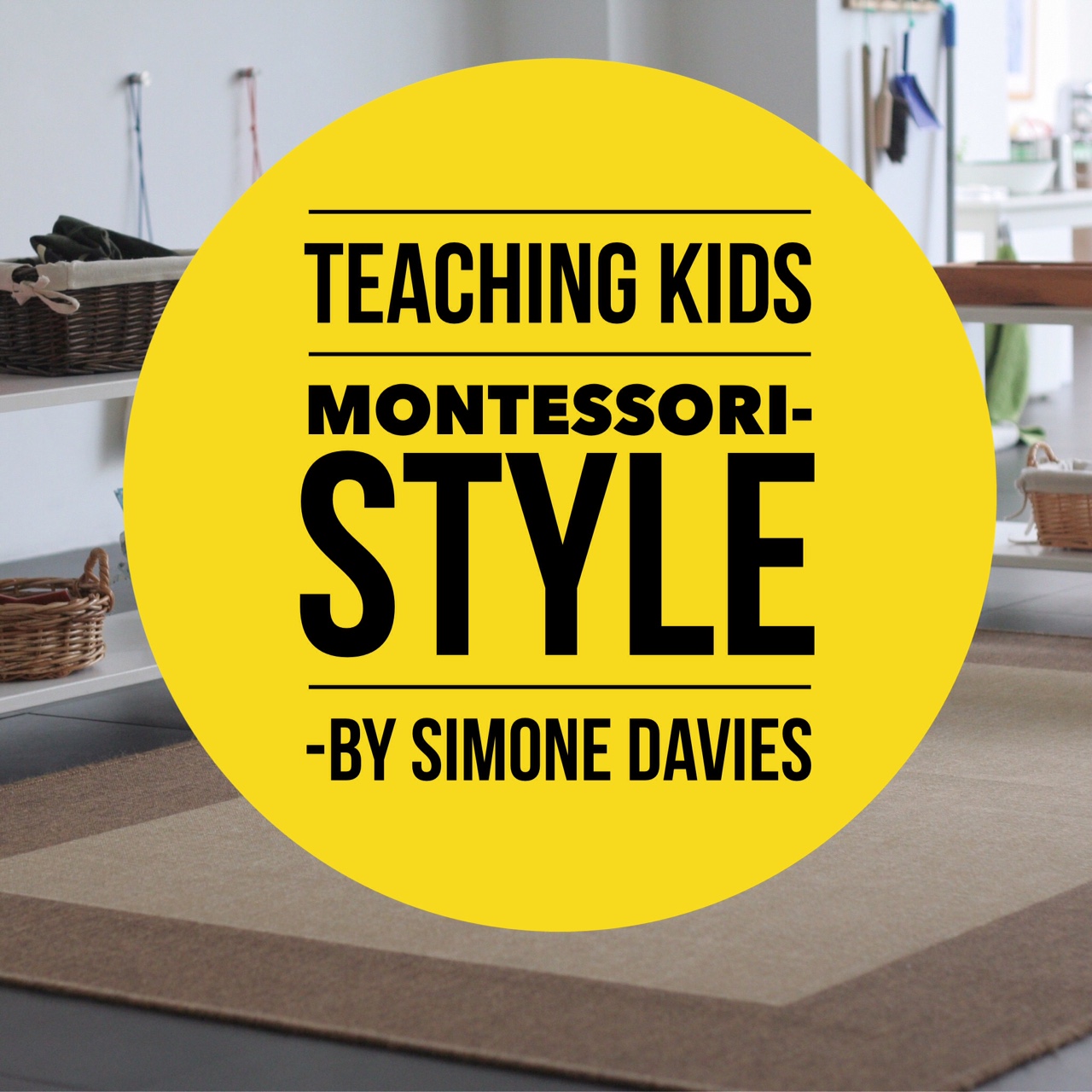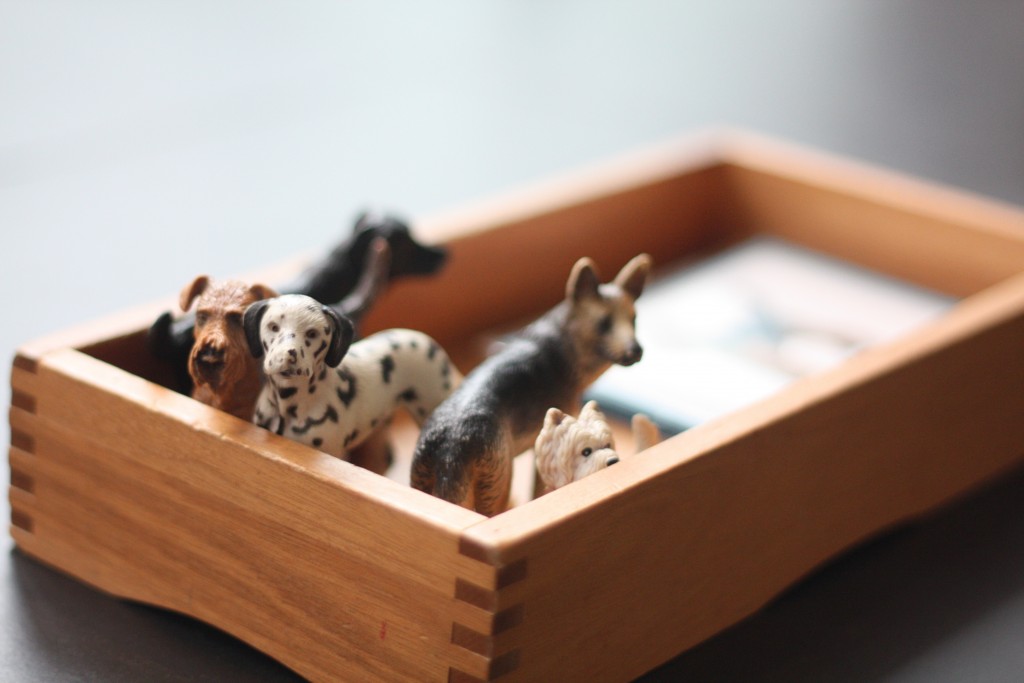Three-Period lesson
Today I wanted to share with you something from the classroom. It’s a process for teaching kids that Montessori teachers use and which is playful, interactive, and respectful to the child.
So let’s jump right in!

A three-period lesson
This process of teaching kids is called a three-period lesson, basically a lesson in 3 parts.
It is a way of presenting new information to your child. It’s going to be a lot more organic than what I write here, but will give you the idea!
In our classes with the youngest children, the three period lesson is used mostly in the language corner to teach the vocabulary baskets. As the child moves into preschool, we can teach the sounds of letters, colours and other learning areas the same way.
Let’s use the example of teaching our child the names of dogs using a vocabulary basket of dogs.

1. FIRST PERIOD: Name the objects
For example, say “Labrador” then feel around the object, looking at all the details and offer it to your child to have a look. Keep saying just “labrador” rather than talking about the sounds it makes or using long sentences. Then name the other dogs in the basket in the same way.
2. SECOND PERIOD: Play games
Here you can play games to see which names your child knows (even before they are verbal).
- “Can you find me the labrador?”
- “Let’s find the picture that matches the dalmatian.”
- “You choose an object and we’ll find the matching card. Is this the picture of the west highland terrier? Noooo. Is this the picture of the west highland terrier? etc”
- “Pick a card any card. Which picture is it? The German shepherd. Can you find the German shepherd that matches the picture?”
Then you can make a mental note of which ones they need more practice with. Return to the first period to practise these.
3. THIRD PERIOD: Testing “What is this?”
We generally skip this period with children under 3 years. The only exception is if you have a very verbal child and you absolutely know they already know it.
By skipping this part of the lesson with toddlers, you avoid setting them up to get things wrong.
SIDE NOTE: Just notice how many times you test your toddler. “What is this?” “What colour is this?” etc. I remember saying to my son, “Show Nanny how you can clap.” Now I see that this is more like asking him to perform tricks rather than just enjoy these moments when they happen naturally.
And when they get it wrong
If the child gets it wrong, I would make a mental note which one to present again to the child to keep practising with them.
There is a lovely saying we use:
“Teach by teaching, not by correcting.”
If I asked them to find a labrador and they pick up the wrong dog, we could simply say, “You wanted to show me the dalmatian”; and make a mental note to show the labrador and dalmatian again at another time.
Rather than correcting it in that moment, you can try to teach it again at a neutral moment.
At home
You could use a three-period lesson at home too. There are times when we do want to teach our children things:
- To learn the names of vegetables, of flowers, of animals, of any objects you have around the house
- When your child becomes interested in colours, you could also play some of these games
- If your child gets confused between two names
- I’m sure you have lots of great ideas too
I hope I’ve started you thinking on how you could use the three-period lesson with your child. And to have fun in a hands-on, positive way with your child.
That’s all for today. I’ll be back next week with some more inspiration for you.
Have a great week!

Simone Davies has more than 20 years’ experience as an AMI Montessori educator. Simone is the author of “The Montessori Toddler” and co-author of “The Montessori Baby” and “The Montessori Child” books, comprehensive guides to raising children in a Montessori way. She currently runs parent-child Montessori classes in Amsterdam at her school Jacaranda Tree Montessori. She also has a popular blog, instagram and podcast “The Montessori Notebook” and is mother to two young adults.